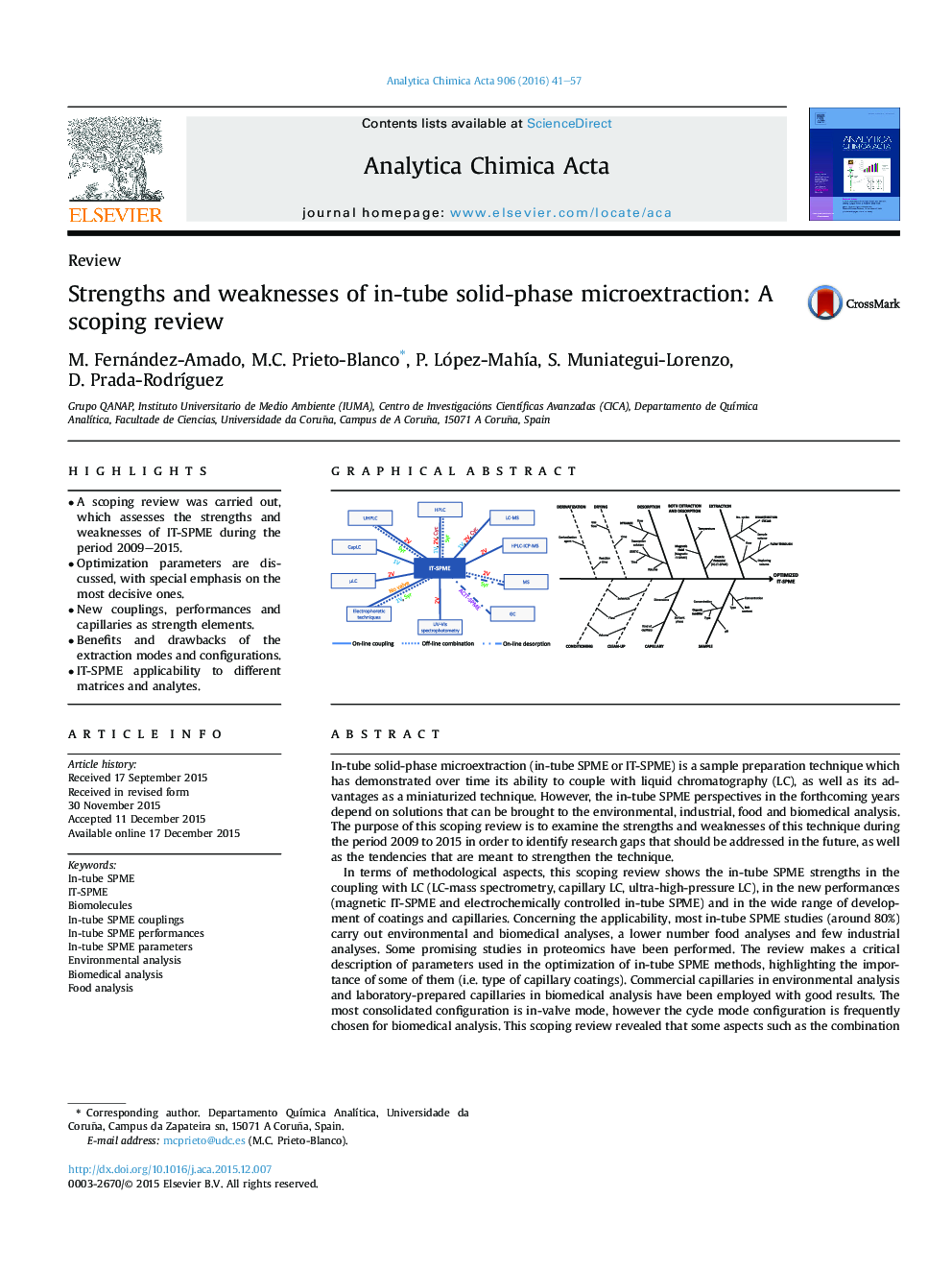| کد مقاله | کد نشریه | سال انتشار | مقاله انگلیسی | نسخه تمام متن |
|---|---|---|---|---|
| 1163035 | 1490926 | 2016 | 17 صفحه PDF | دانلود رایگان |

• A scoping review was carried out, which assesses the strengths and weaknesses of IT-SPME during the period 2009–2015.
• Optimization parameters are discussed, with special emphasis on the most decisive ones.
• New couplings, performances and capillaries as strength elements.
• Benefits and drawbacks of the extraction modes and configurations.
• IT-SPME applicability to different matrices and analytes.
In-tube solid-phase microextraction (in-tube SPME or IT-SPME) is a sample preparation technique which has demonstrated over time its ability to couple with liquid chromatography (LC), as well as its advantages as a miniaturized technique. However, the in-tube SPME perspectives in the forthcoming years depend on solutions that can be brought to the environmental, industrial, food and biomedical analysis. The purpose of this scoping review is to examine the strengths and weaknesses of this technique during the period 2009 to 2015 in order to identify research gaps that should be addressed in the future, as well as the tendencies that are meant to strengthen the technique.In terms of methodological aspects, this scoping review shows the in-tube SPME strengths in the coupling with LC (LC-mass spectrometry, capillary LC, ultra-high-pressure LC), in the new performances (magnetic IT-SPME and electrochemically controlled in-tube SPME) and in the wide range of development of coatings and capillaries. Concerning the applicability, most in-tube SPME studies (around 80%) carry out environmental and biomedical analyses, a lower number food analyses and few industrial analyses. Some promising studies in proteomics have been performed. The review makes a critical description of parameters used in the optimization of in-tube SPME methods, highlighting the importance of some of them (i.e. type of capillary coatings). Commercial capillaries in environmental analysis and laboratory-prepared capillaries in biomedical analysis have been employed with good results. The most consolidated configuration is in-valve mode, however the cycle mode configuration is frequently chosen for biomedical analysis. This scoping review revealed that some aspects such as the combination of in-tube SPME with other sample treatment techniques for the analysis of solid samples should be developed in depth in the near future.
Figure optionsDownload as PowerPoint slide
Journal: Analytica Chimica Acta - Volume 906, 4 February 2016, Pages 41–57